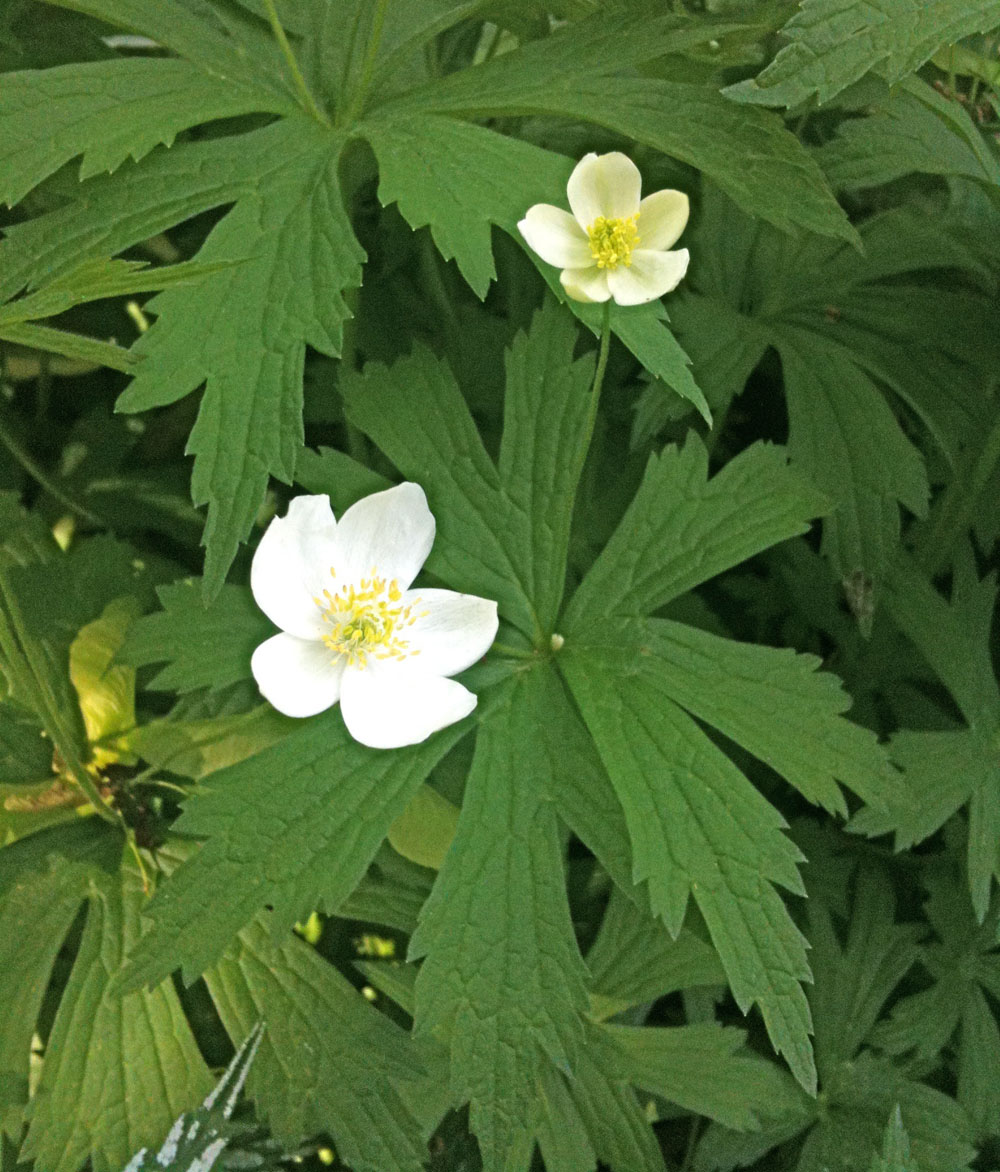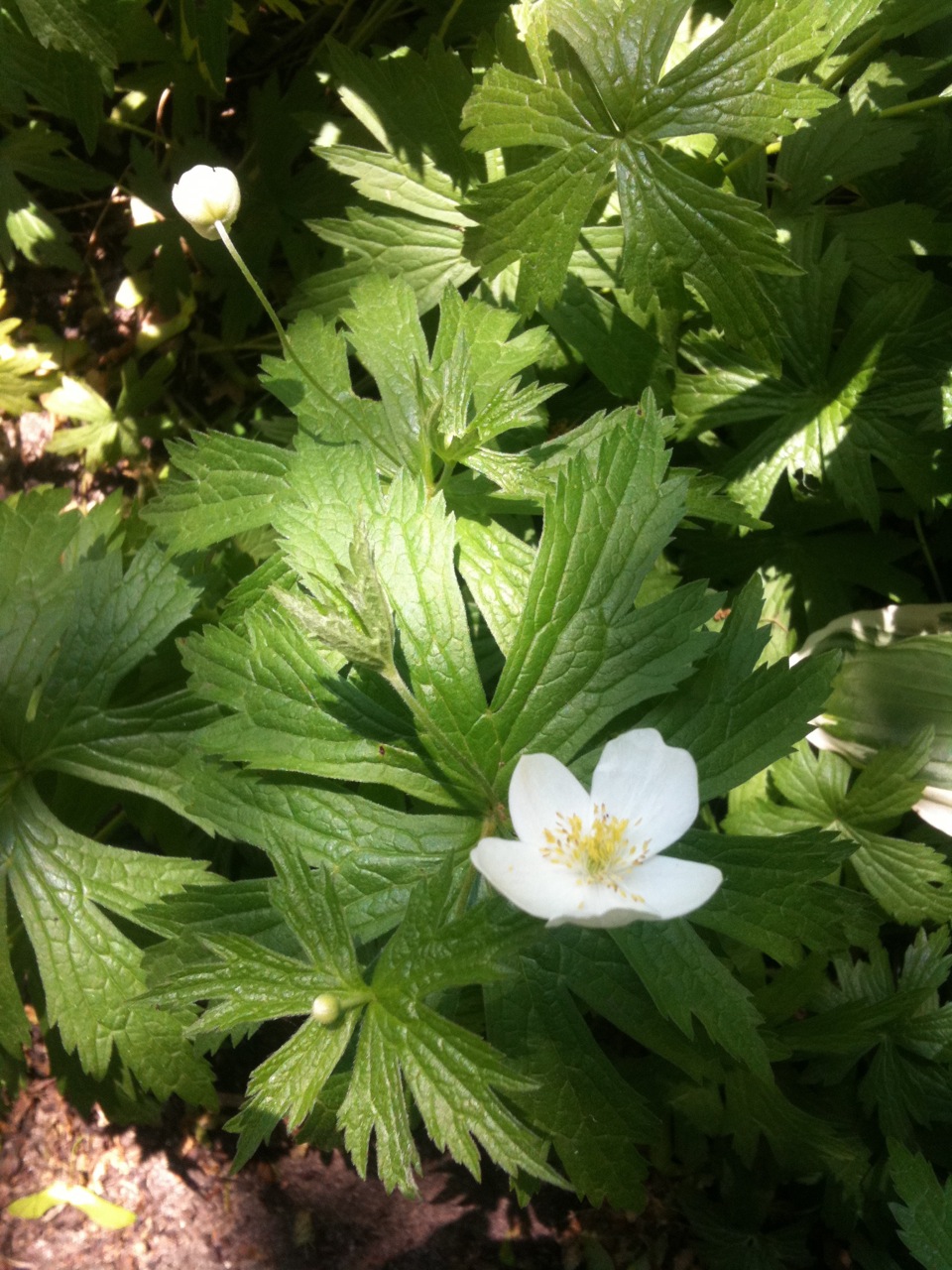Meadow anemone
Meadow anemone (Anemone canadensis), as it's usually called in Illinois, is also known as Canadian anemone, windflower, or round-headed thimbleweed. A perennial wildflower of the Ranunculaceae (buttercup) family, it features dramatically jagged leaves on tall stalks. Small, usually-five-petaled white flowers with yellow centers appear in spring in mature plants and can last through summer. Native to the U.S. east of the Rockies, meadow anemone has disappeared from most southern and border states, is in critical status in much of the north, and is considered "vulnerable" in Illinois. So planting it supports a species that could use a little help.
 Naturally often found on river or pond banks, this pretty wild buttercup tolerates varying sun and shade conditions, ideally a mix of both during the day, and in favorable conditions will form dense cover a foot or two tall, sometimes aggressively. I put it on a terrace below a cement sidewalk where other plants struggled, and it thrived despite (or maybe because of) constant runoff from the walk. Too-dense thickets can be thinned in the fall.
Naturally often found on river or pond banks, this pretty wild buttercup tolerates varying sun and shade conditions, ideally a mix of both during the day, and in favorable conditions will form dense cover a foot or two tall, sometimes aggressively. I put it on a terrace below a cement sidewalk where other plants struggled, and it thrived despite (or maybe because of) constant runoff from the walk. Too-dense thickets can be thinned in the fall.
Some large, impressive patches of this species are featured on the banks of the rain garden at the Daniel F. and Ada L. Rice Plant Conservation Science Center at the Chicago Botanic Garden.
- Printer-friendly version
- Log in to post comments


